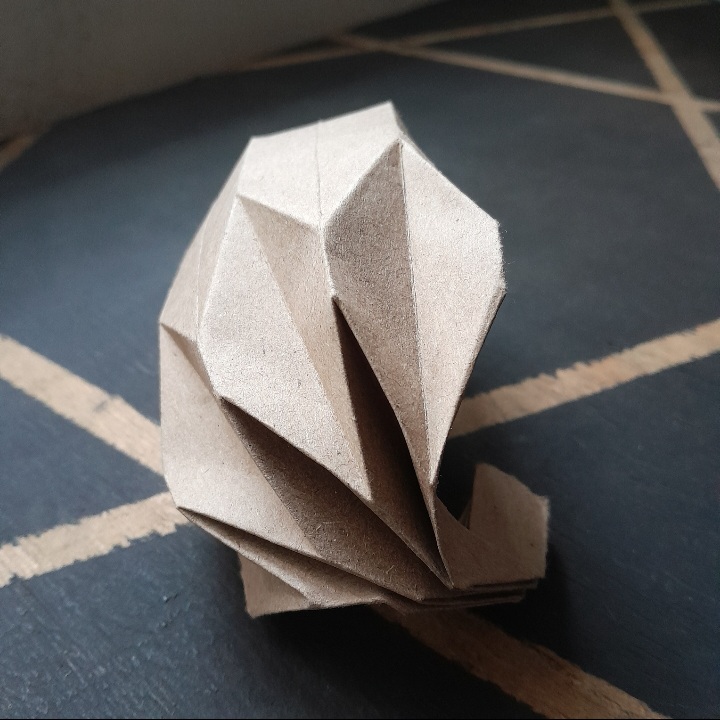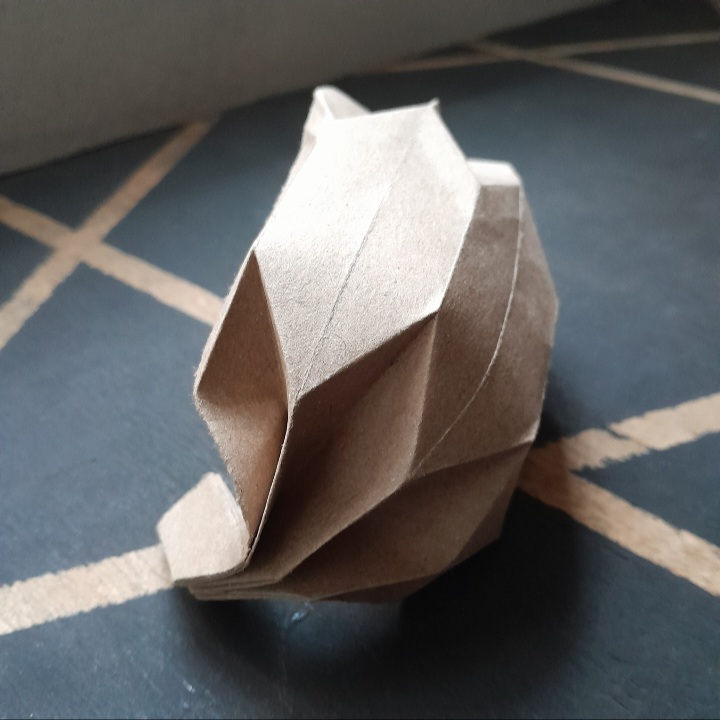PAPER FOLDING EXPERIMENTS
BY MICHAEL MUCHAI
COPYRIGHT
ACKNOWLEDGEMENTS
I would like to say thank you to my brother James Kiarie, for suggesting I record my work in this format and helping me set up this book, GitHub for hosting my work and all origami artists that have and continue to inspire me.
WHAT THIS BOOK IS
This book is a record of my paper folding experiments. It can be an instruction book for those who would like to try the projects herein.
WHAT THIS BOOK IS NOT
ABOUT THE AUTHOR
Michael Muchai | Email: foldcf@gmail.com | Instagram: @foldcf | Nakuru, Kenya
I fold paper. I also teach, sometimes.
I used to fold origami when I was in primary and secondary school. I was not that serious. I mostly did the common models we taught each other — the boat, the plane, the frog etc. It was fun.
I remember one of my first 'independent discoveries': the space shuttle. Made it when I was in lower primary school, I can't remember exactly when. I made it by adding three paper guns to an inverted paper boat. Felt good.
While in high school, I started to look for instructions online, for example, "how to fold a paper crane, swan, elephant...", and then memorizing the steps. I didn't have a phone then, I used my dad's. Then I stumbled upon this origami fish that had scales (I can't remember the designer.) I was impressed and fascinated. I discovered tessellations within the next few weeks, but I didn't fold one until July 2020. Here is the first tessellation I ever folded:

To date, I have folded more than 100 tessellations, sold some and taught paper folding both locally and internationally. I think tessellations are cool. It's always fun to teach and fold them.
WHAT I HOPE FOR
I hope to organise and record my work. I hope to share a few ideas. I hope to inspire others to fold. I hope you try folding some of these models.
MY ASSUMPTIONS
-
You are not new to paper folding.
-
You are interested in tessellations.
-
You know how to read crease patterns.
-
You know how to prepare a triangular grid.
-
You know how to fold the basic twists:
-
Open and closed triangle twists
-
Open and closed hexagon twists
-
SECTION 1: MATHS
A USEFUL FORMULA
ABOUT THE MOLECULE
STEPS
GALLERY
FREE FROM THE MARGINS
SECTION 2: FIGURATIVE MODELS
THE SPACE SHUTTLE
ABOUT THE MODEL
STEPS
GALLERY
A SMALL BOAT

ABOUT THE MODEL
I developed this model in June 2023. It is a simple one. I recommend using thick paper to allow wet-folding.
STEPS
(If you are using your phone to view this page, you'll see the images below better in landscape orientation.)
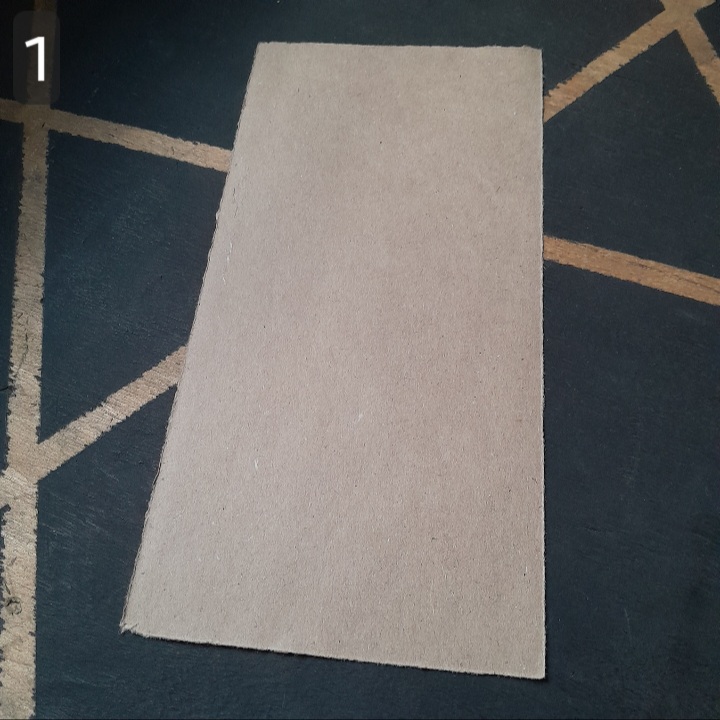 | Start with a rectangular sheet of paper. |
 | Make alternating mountain and valley folds. |
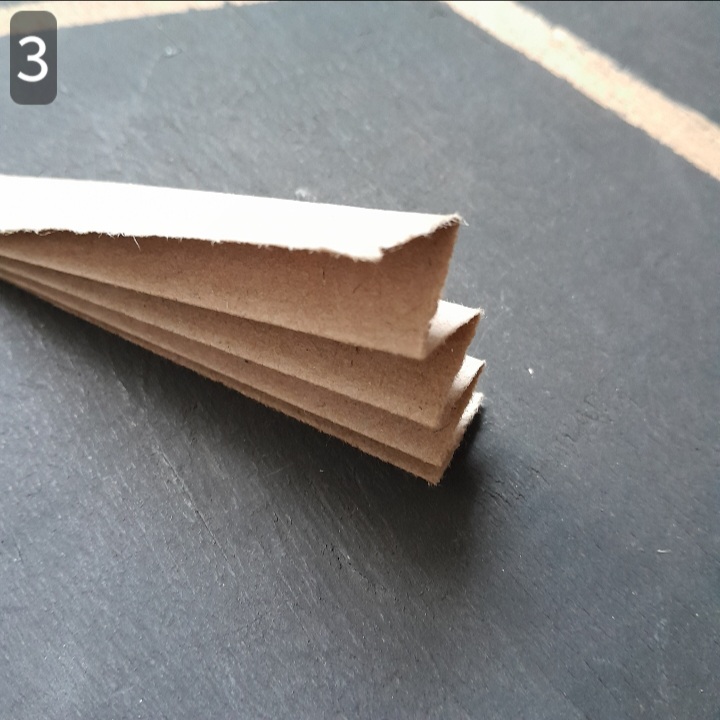 | Fold into an accordion shape. |
 | Get the center, unfold. |
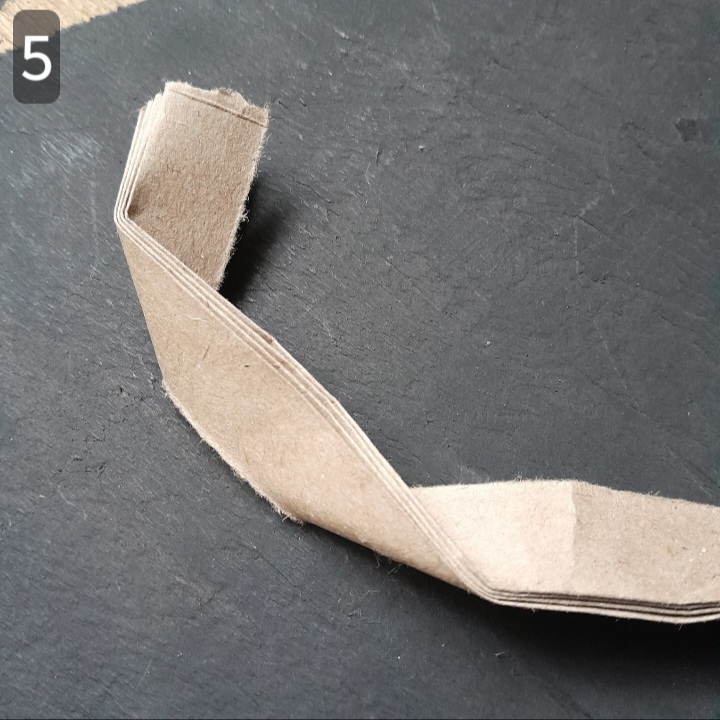 | Towards one side (from the center) fold the model into a C shape. |
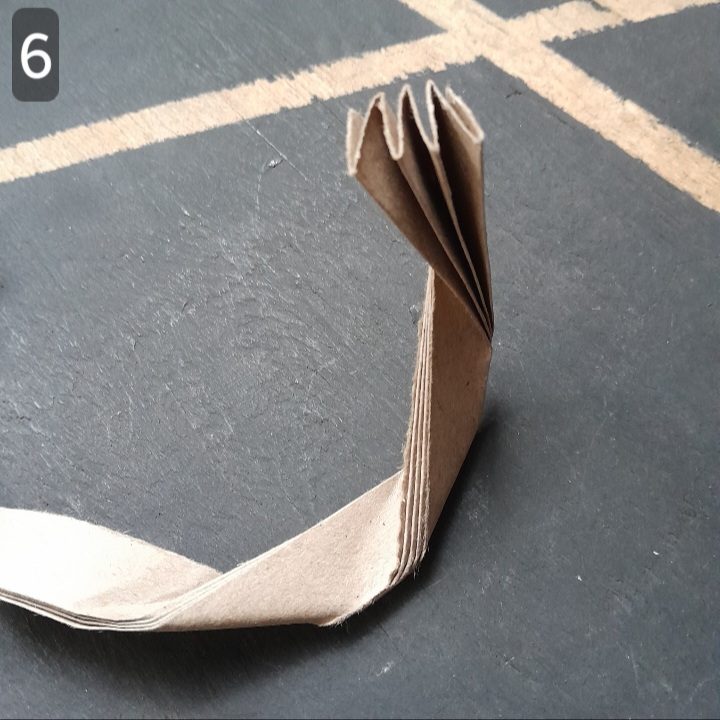 | Repeat on the other side. |
 | Unfold. |
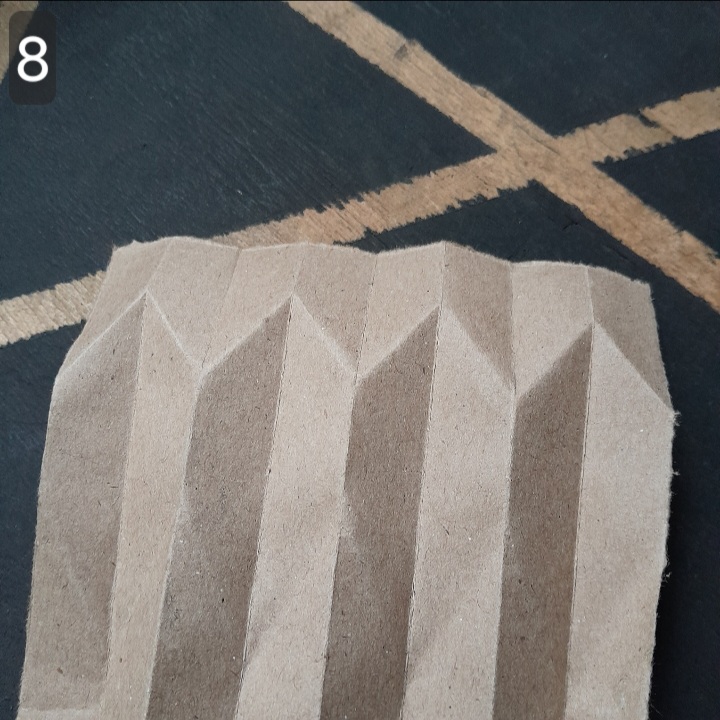 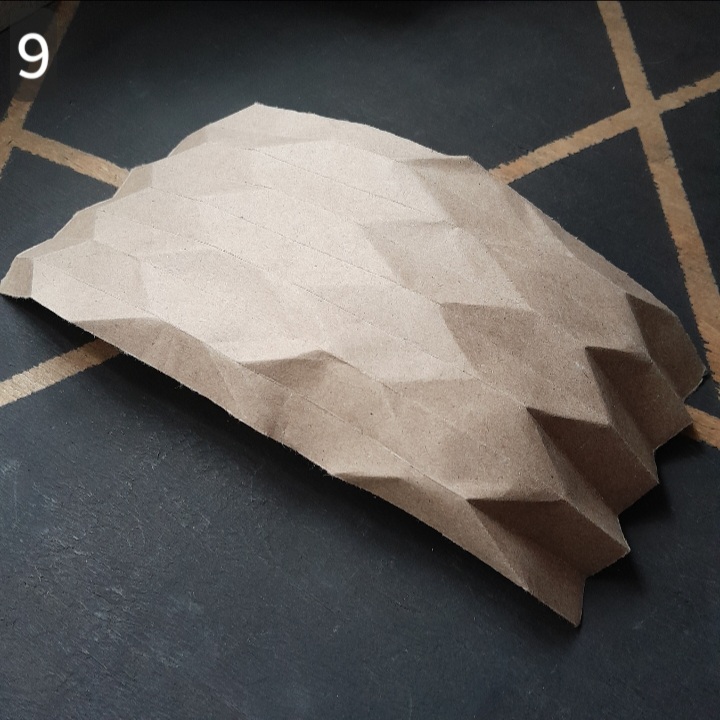 | Convert all the zigzags formed in step 5 and 6 into mountain folds. You'll notice that the boat is slowly taking shape. Continue reinforcing the mountain folds. |
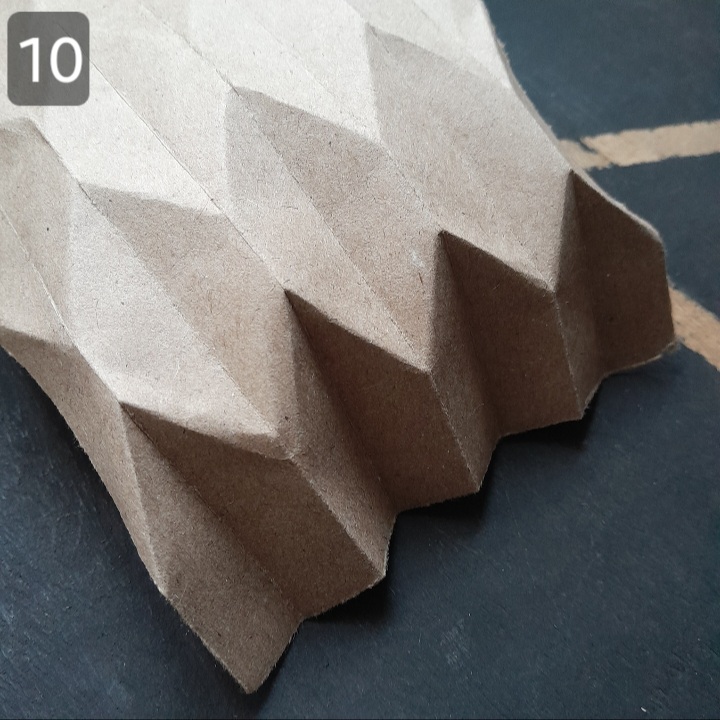  | Notice that once a mountain fold crosses a zigzag, it changes to a valley fold; and a valley fold becomes a mountain fold. |
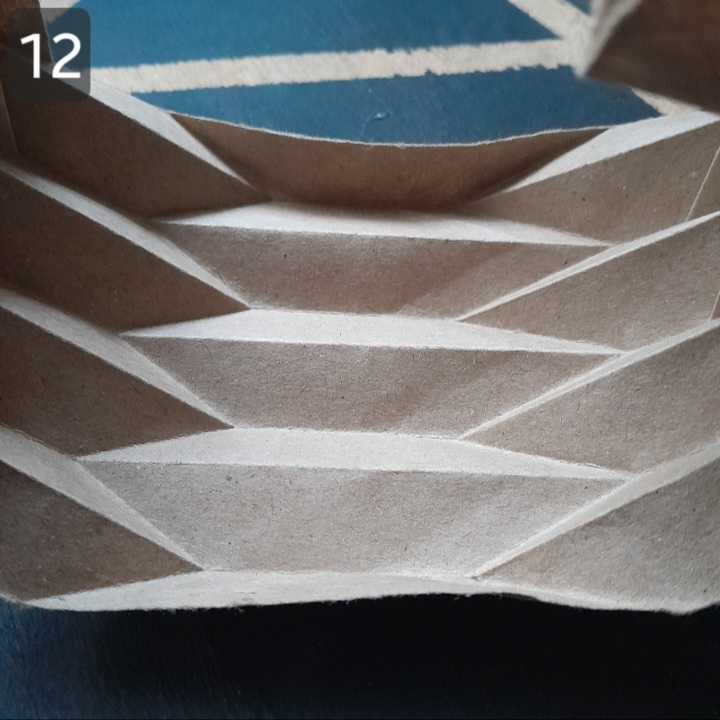 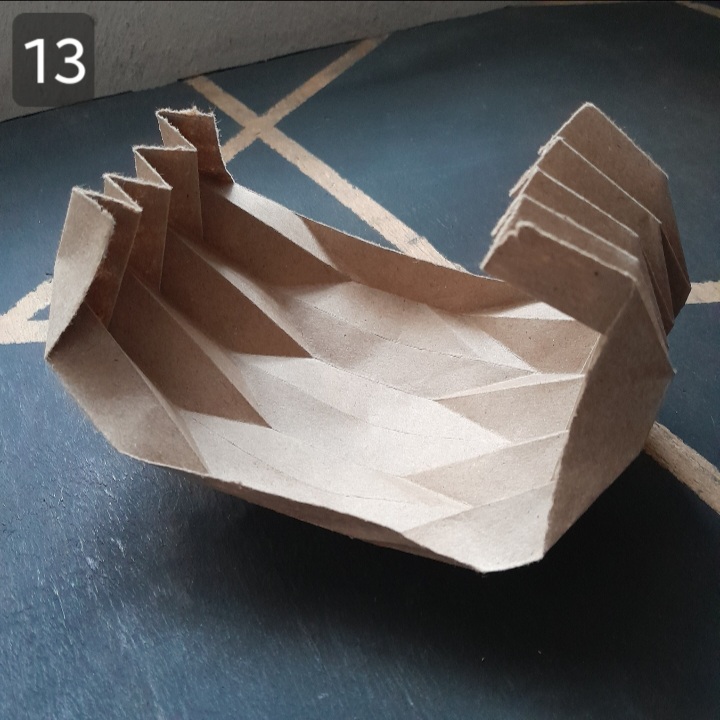 | Push the three central mountain folds downwards. |
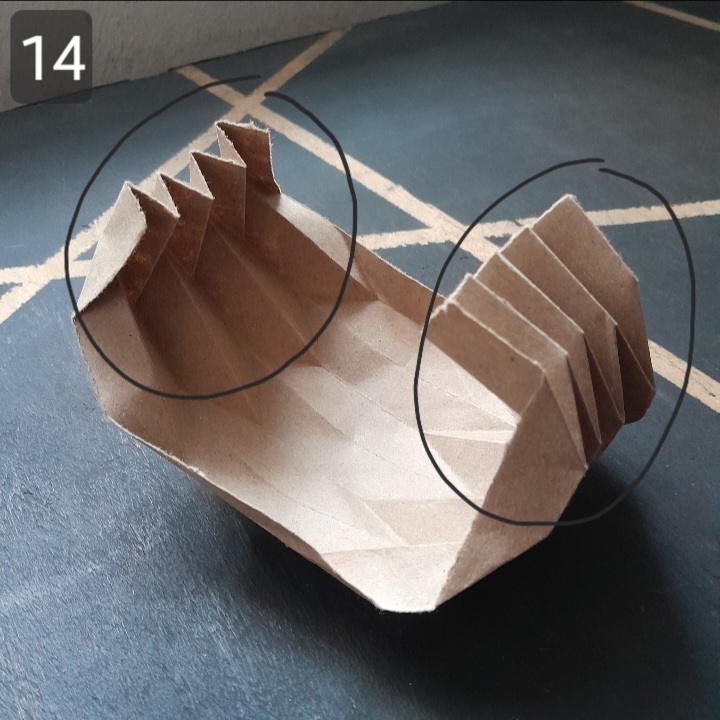 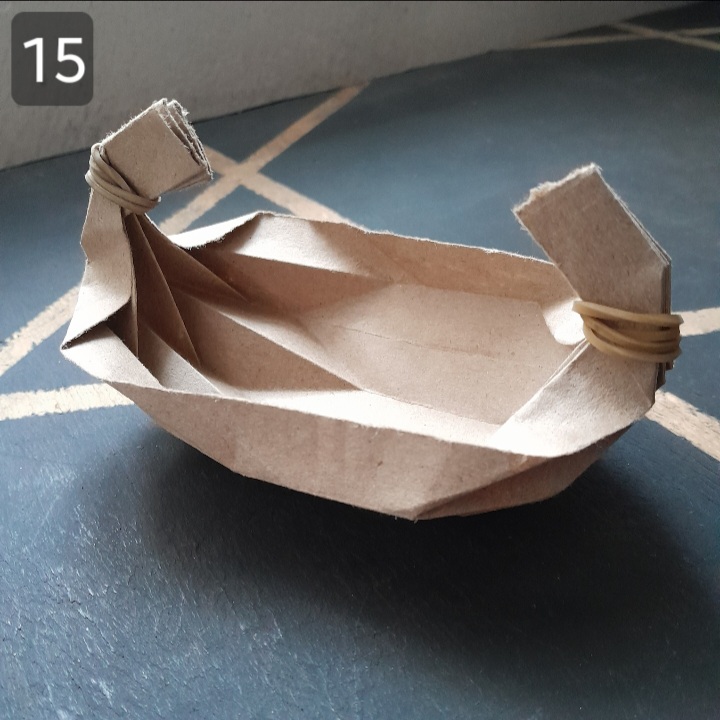 | Spray some water in the regions circled and tie with a rubber band/clip. Allow it to dry. |
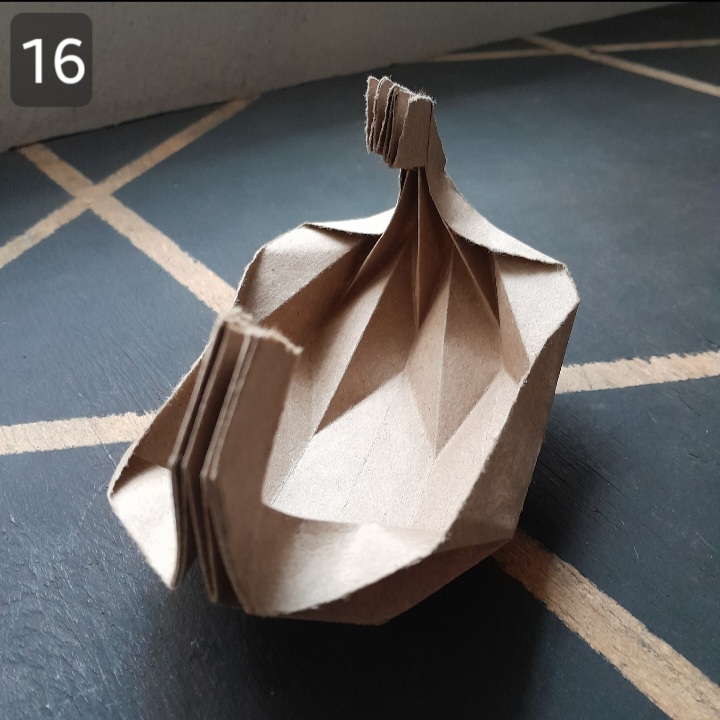 | Done. |
GALLERY


